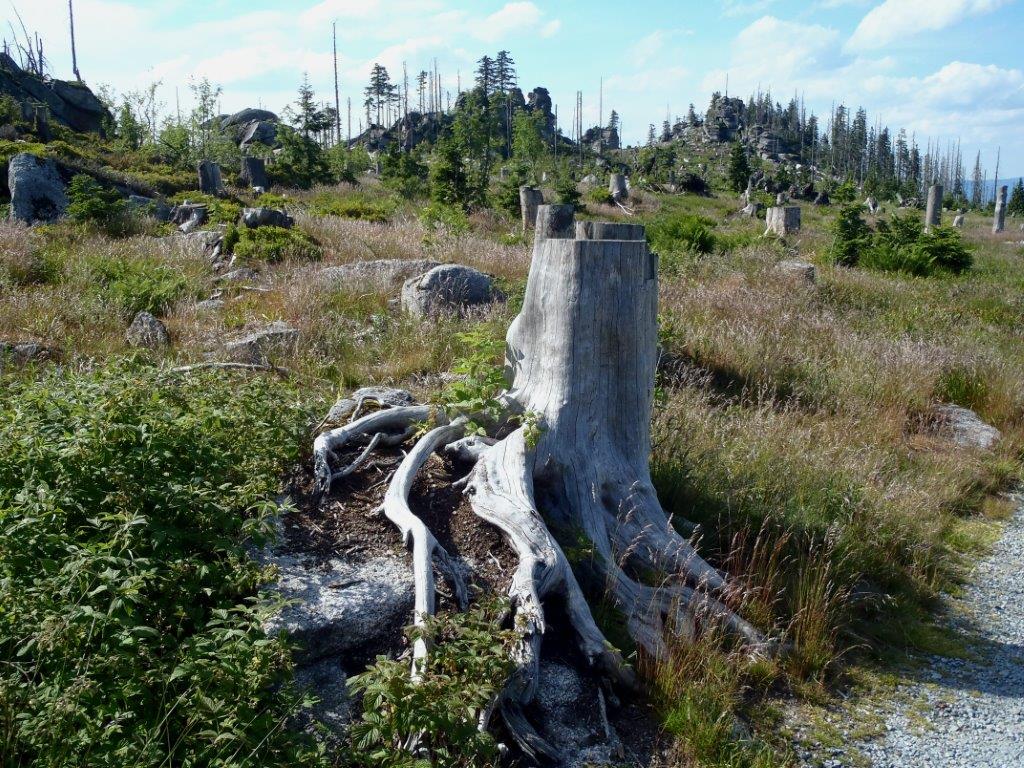"The consequences of frequent natural disasters our forests have been subjected to are quite visible in our surroundings. The damage was caused by heavy sleet in 2014, followed by the infestation with bark beetle in 2015. The infestation has persisted through this year as well," Andrej Breznikar from the Slovenia Forest Service said. He explained that in the period from the summer of the last year to this May they have detected two million and a half of cube metres of predominantly spruce wood infected by bark beetle. The only solution is to cut those trees and saw the wood as soon as possible in order to destroy the brood under the bark; they have managed to remove from the forests the majority of the infected wood, namely 93%. "It is the only solution – the infected trees must be taken from the forest to processing plants within a fortnight, not later than three weeks," the expert emphasized.
This year abundant brood of bark beetle is expected as well
At infestation with bark beetle the detection and intervention must be almost simultaneously performed; that is the key measure for stopping the infestation with bark beetle from spreading. He admits that this year will be very difficult as well as far infestation with bark beetles is concerned, which is the consequence of the mild winter, which was survived by most of the brood. Although bark beetles do not thrive in cold summers, the danger is far from gone, as the summer is near, and high temperatures and dry weather usually accelerate the development of bark beetle, explains Breznikar, and continues: "That’s one of the reasons we fear the number of the infected trees will be the same as last year."
The infestation with bark beetle came after the damage done by heavy sleet, as a lot of trees at the area where the sleet hit were weakened due to damage. The experts were expecting it, yet not in such a great extent. According to Breznikar, mostly the forests at the Notranjska and Ljubljana region are affected, but also the region of Tolmin, the surroundings of Kranj, and the Kočevje region. He also warns that no part of Slovenia is excluded. The pest is less frequent in Prekmurje region and in the Karst region, but of course that can be attributed to the fact that spruce is less frequent in those areas.
There is no prevention; immediate action is a must
Breznikar admits that for such diseases, pest, or invasive plants (e.g. Japanese knotweed) there is no prevention. Forests are open ecosystems, and only subsequent measures are possible. "Of crucial importance is consistent implantation of prescribed measures, which must be taken as soon as possible after the pest is detected. The task of the public forest service and the owners of the forests is to try to increase the stability of the forests with adequate care, and increase their resistance to negative phenomena," Breznikar warns.
Often the damage is done by men, therefore Breznikar emphasizes the importance of the correct attitude towards forests: "An appropriate access into a forest is suitable for both humans and forests, if it leaves the forest in the same condition it was. Therefore the cooperation of users, owners of forests, and public forest service in this field is of utmost importance, as in this way we preserve our forests such as they are – which is beneficial for the society as well, as it allows their use for all kinds of purposes, from recreation to tourism and active use of spare time, which is very important for the contemporary society."
Forests have great potential for tourism
Breznikar is convinced that the Slovenian forest has a great potential for tourism purposes, and the importance of tourism as an economic branch is obvious. "We have a lot to lose should we not develop forests with the intention of marketing nature," he believes. Doubts exist whether tourism and unspoiled nature can coexist, but he disagrees: "Natural and sustainable use can regulate visits in such a manner to prevent long-term damage to forest systems."
He does not consider "gathering" as harmful, as in his opinion an individual gathering forest fruit for his or her own limited use can’t do a lot of damage to the forest. Those who gather large quantities are supervised by competent institutes as directed by the legislation, which is in Breznikar’s opinion quite adequately regulated – if respected, of course.


































































